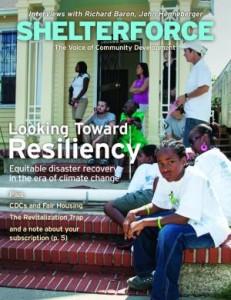Can San Francisco Get Mixed-Income Public Housing Redevelopment Right?

"Can San Francisco Get Mixed-Income Public Housing Redevelopment Right?" by NIMC's Mark Joseph and co-authors Nancy Latham, Rachel G. Kleit and Steven LaFrance discusses how the HOPE SF program is aiming to explicitly avoid many of the problems mixed-income public housing redevelopments have faced, to create a truly inclusive process.
As the affordable housing crisis and issues of social and racial inequality once again gain national attention across the United States, the HOPE SF housing redevelopment initiative represents a unique effort to ensure that the poorest residents of San Francisco are not excluded from the benefits of that city’s economic growth and vitality.
HOPE SF, designed and launched as a locally-funded initiative after San Francisco failed to secure HOPE VI funding, tackles individual-level, development-level, and neighborhood-level transformation simultaneously, which subsequently landed the project a $30 million Choice Neighborhoods Initiative implementation grant and two $300,000 planning grants.
Though mixed-income development has become a favored public housing transformation approach in the United States (as it has in Canada, Western Europe, and Australia), there has been strong criticism of the policy as well. Criticism generally focuses on the reduction in the number of available public housing units, the displacement of public housing residents, and the use of valuable public land for market-driven real estate projects.
The goal of avoiding the exclusionary pitfalls of other mixed-income efforts has intentionally guided design and implementation of HOPE SF. The vision for HOPE SF is thriving neighborhoods that keep their original residents, offer them a genuine opportunity for social mobility, and create a cohesive community among those at different income levels.
